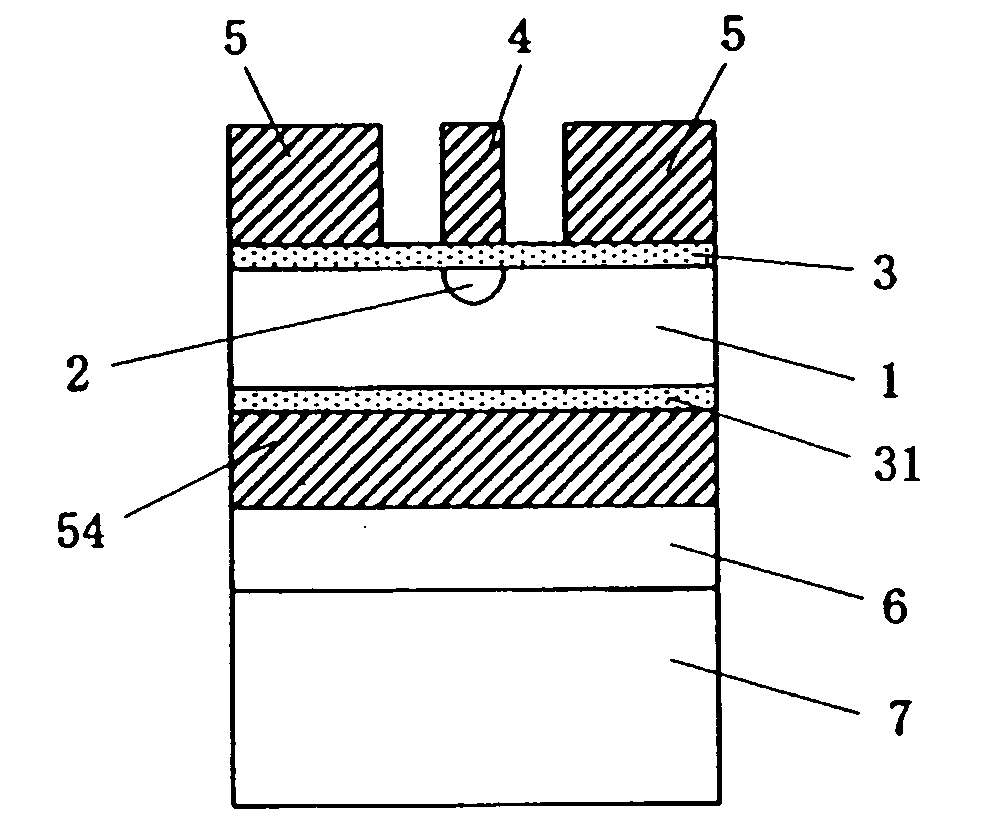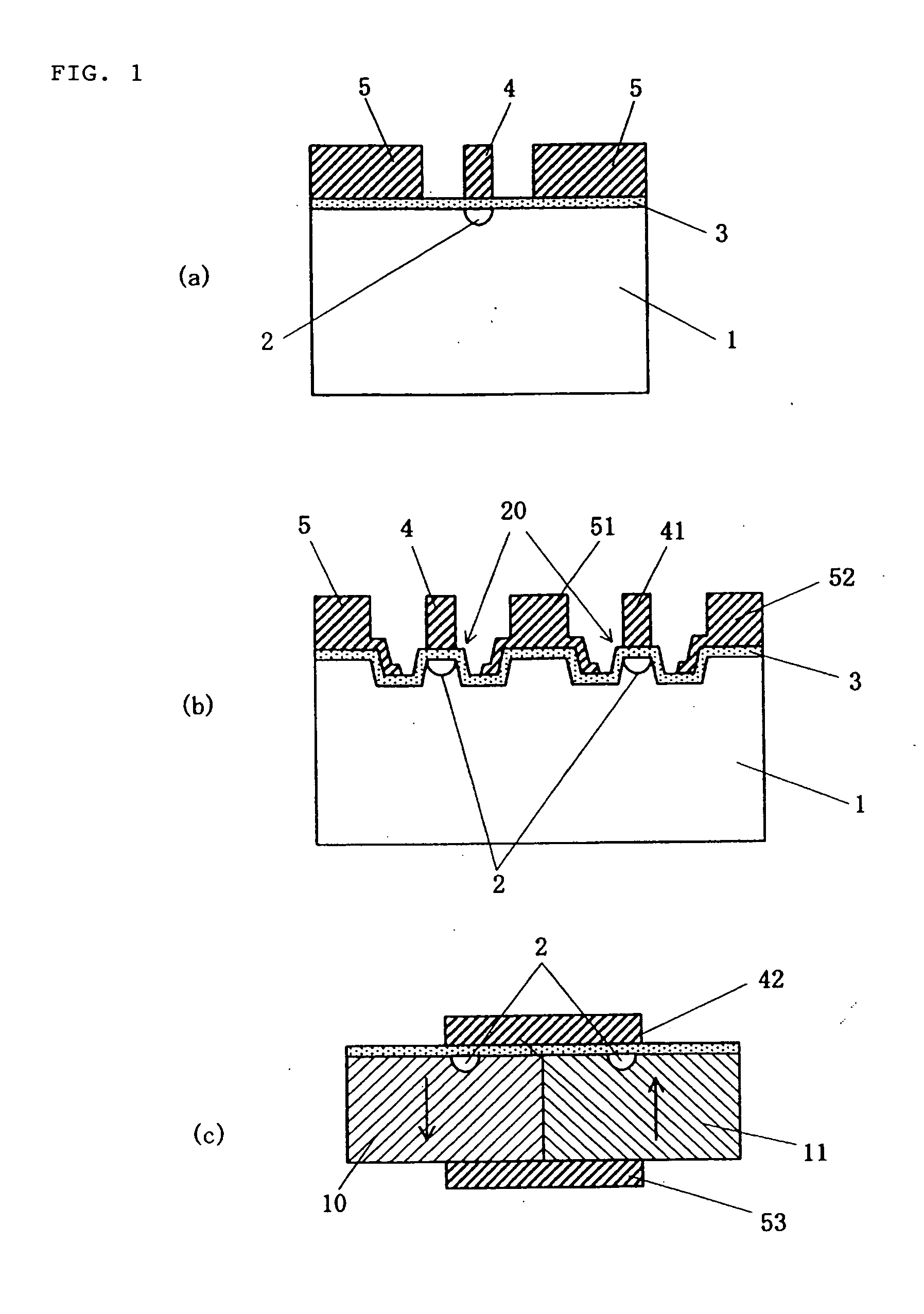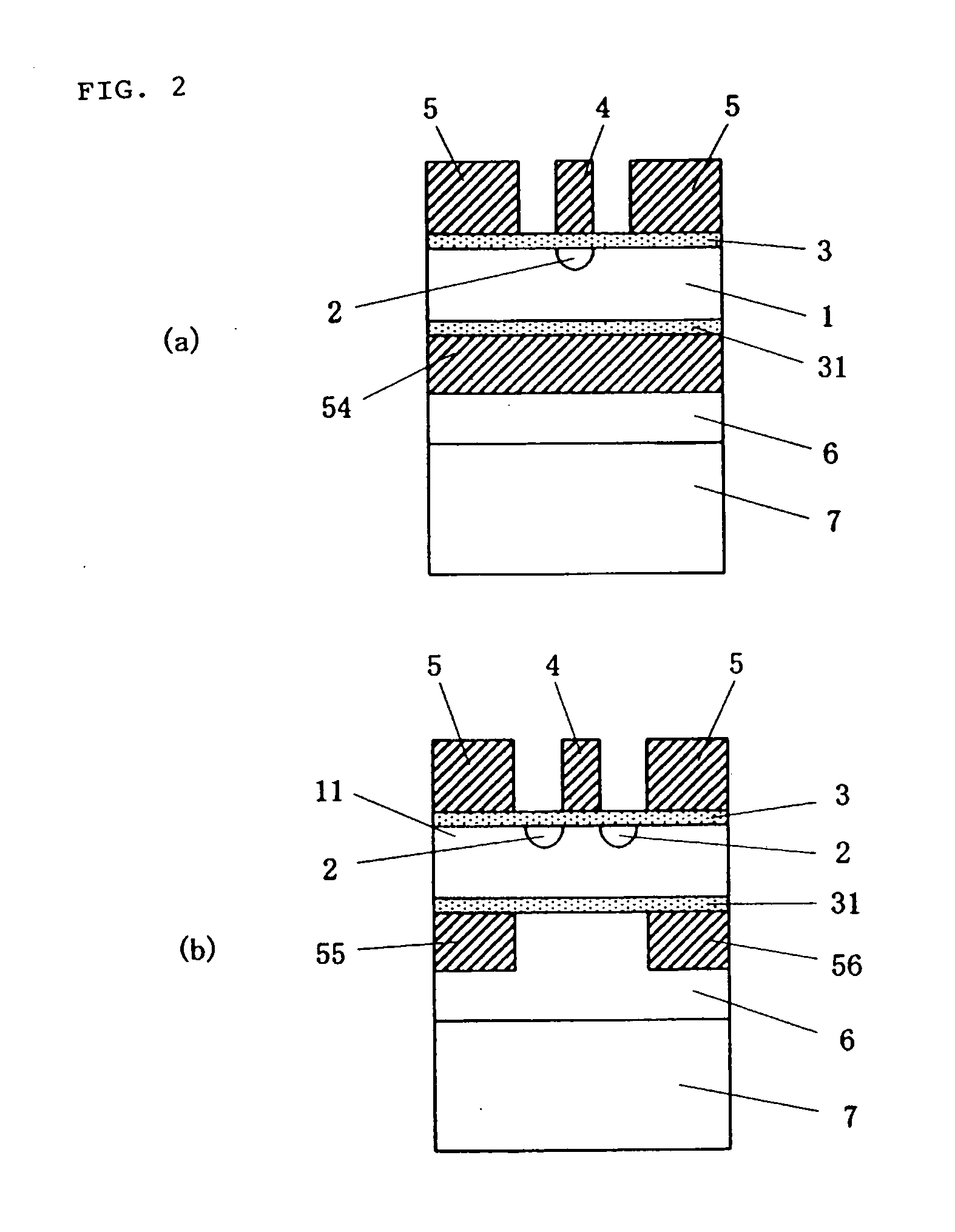Optical Control Device
a control device and optical waveguide technology, applied in the direction of optics, non-linear optics, instruments, etc., can solve the problems of affecting the speed matching between a light wave propagating through the optical waveguide and a modulated signal, and the efficiency of the electro-optical effect, so as to reduce the cost of a driving device, reduce the driving voltage, and increase the confinement efficiency of a light wave
- Summary
- Abstract
- Description
- Claims
- Application Information
AI Technical Summary
Benefits of technology
Problems solved by technology
Method used
Image
Examples
embodiments
[0143]In order to see the basic characteristics of the optical control device of the present invention, a change in a driving voltage value (V·cm) in a substrate thickness range of 2 to 10 μm was calculated in an embodiment in which a coplanar electrode is provided on a top surface side of a substrate and a ground electrode is disposed on a bottom surface side as shown in FIG. 3A, a first known technique example in which only a coplanar electrode is disposed on the substrate surface as shown in FIG. 1A, and a second known technique example in which a substrate is interposed between control electrodes on top and bottom surface sides of the substrate as shown in FIG. 1C. In the embodiment, it was assumed that height of the signal electrode 4 / thickness of the substrate 1 was 1.25, width of the signal electrode 4 / thickness of the substrate 1 was 1.5, gap between the signal electrode 4 and the ground electrode 5 / thickness of the substrate 1 was 3, height of the ridge portion 20 / thickness...
PUM
 Login to View More
Login to View More Abstract
Description
Claims
Application Information
 Login to View More
Login to View More - R&D
- Intellectual Property
- Life Sciences
- Materials
- Tech Scout
- Unparalleled Data Quality
- Higher Quality Content
- 60% Fewer Hallucinations
Browse by: Latest US Patents, China's latest patents, Technical Efficacy Thesaurus, Application Domain, Technology Topic, Popular Technical Reports.
© 2025 PatSnap. All rights reserved.Legal|Privacy policy|Modern Slavery Act Transparency Statement|Sitemap|About US| Contact US: help@patsnap.com



